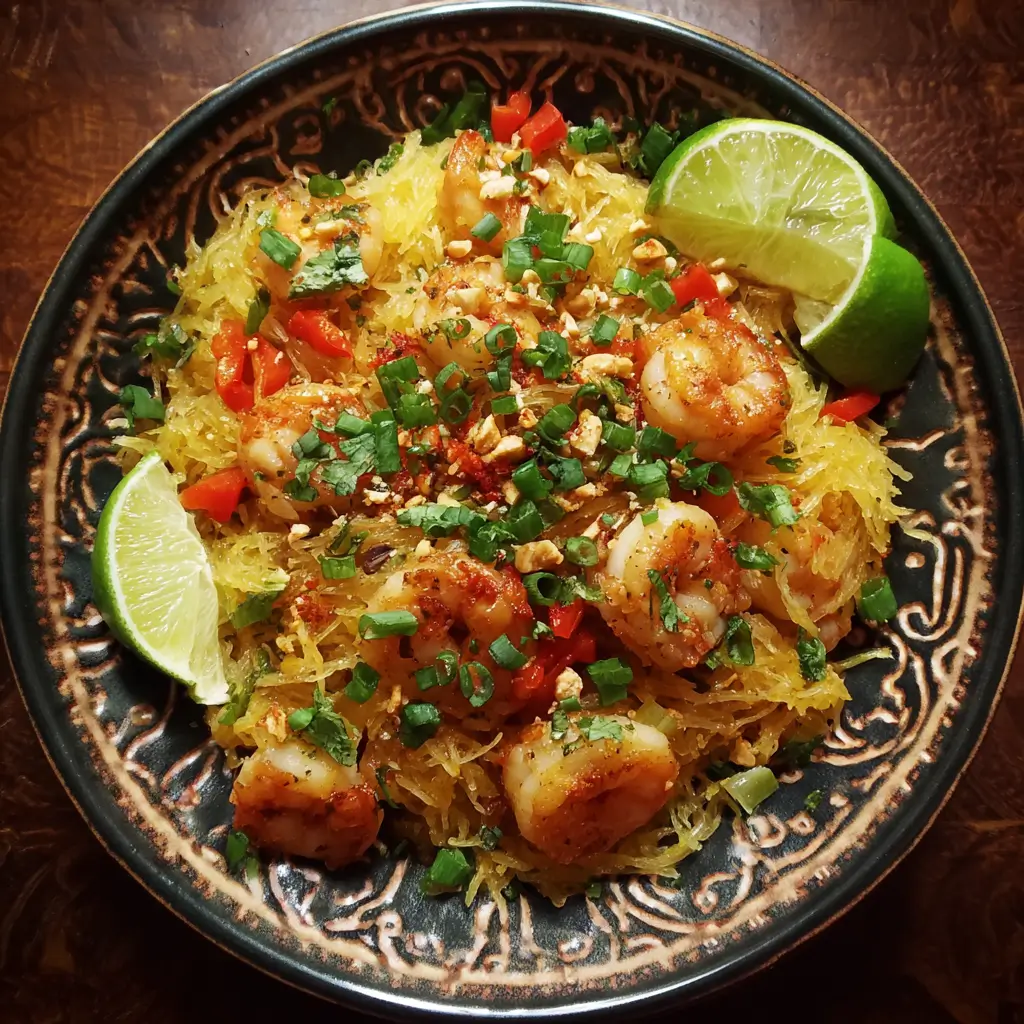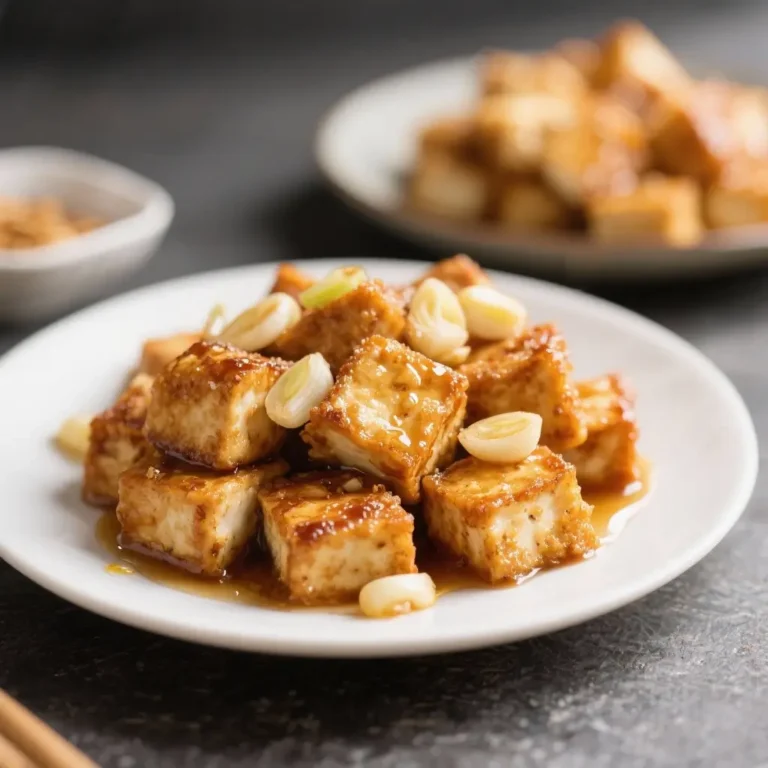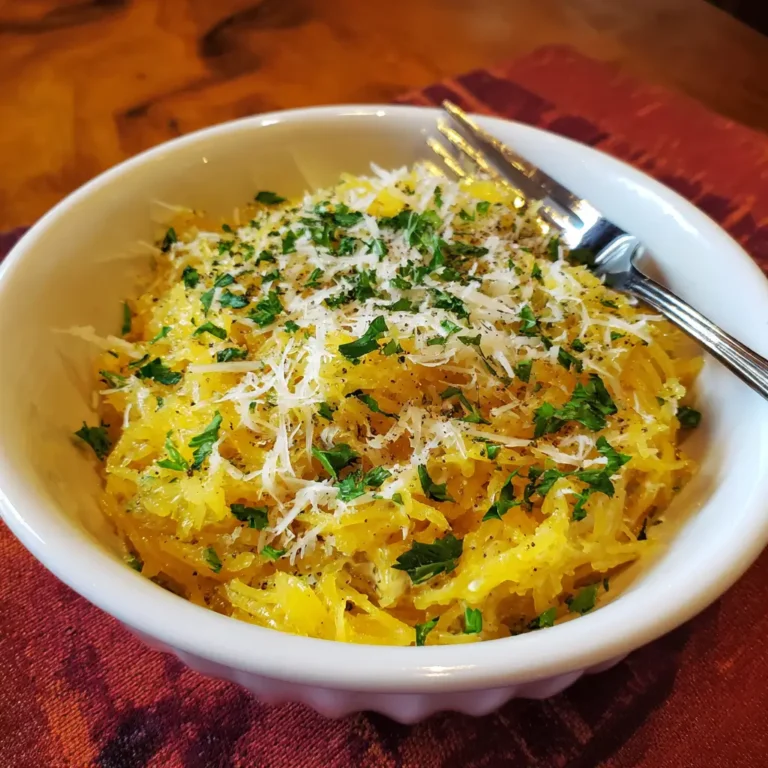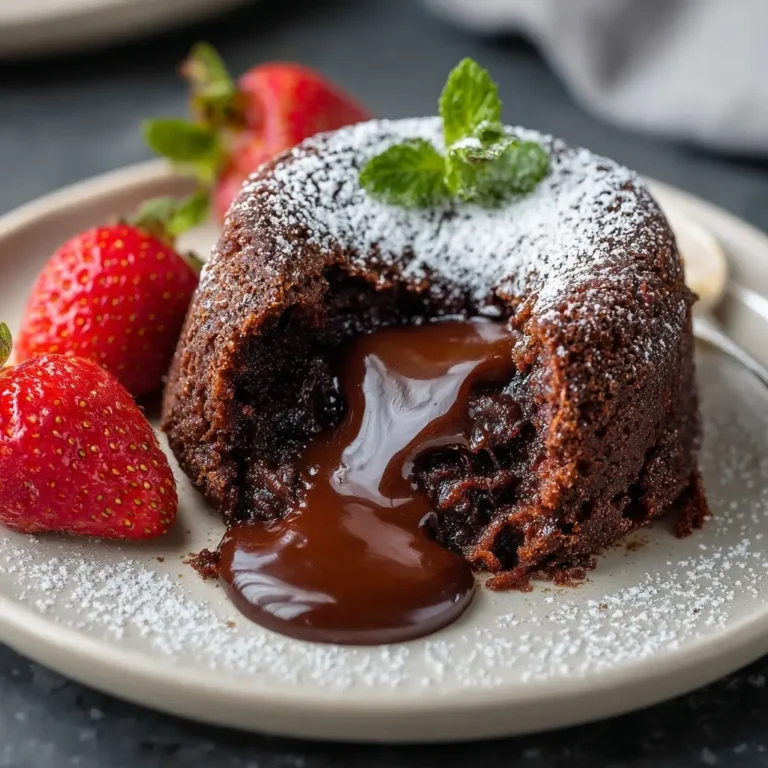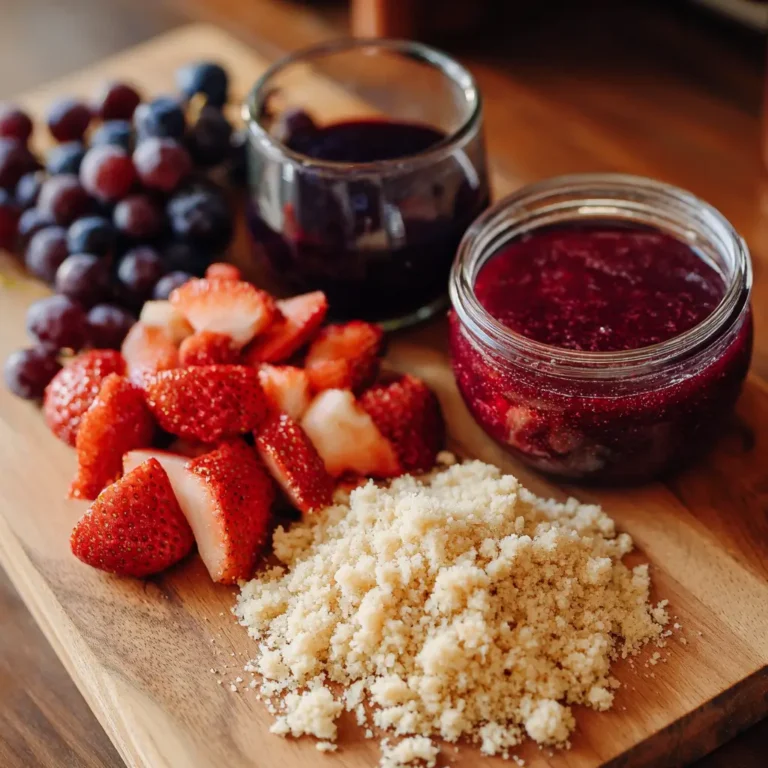Spaghetti Squash Pad Thai
Introduction
Spaghetti Squash Pad Thai is a delicious and healthy twist on the classic Thai street food dish, Pad Thai. This low-carb, gluten-free alternative uses spaghetti squash in place of traditional rice noodles, making it an ideal option for those following paleo, keto, or health-conscious diets. Packed with bold flavors like tamarind, lime, garlic, and fish sauce, this dish brings the essence of Thai cuisine to your table without the guilt.
The History
Pad Thai originated in Thailand during World War II as part of a government initiative to promote rice noodles as an alternative to imported wheat noodles. The dish quickly became a staple of Thai street food due to its savory-sweet-umami flavor profile and quick preparation time. In recent years, with the rise of plant-based and low-carb eating, many chefs and home cooks have started using vegetables like spaghetti squash to recreate the texture of rice noodles while keeping the dish light and nutritious.
Ingredients Breakdown
- Spaghetti Squash: The star ingredient, roasted and shredded into noodle-like strands.
- Tofu or Shrimp: Adds protein; tofu makes it vegan, while shrimp gives a seafood twist.
- Bean Sprouts: Provide crunch and freshness.
- Green Onions: Offer mild onion flavor and color contrast.
- Peanuts: Crushed peanuts add a rich, nutty texture.
- Lime: Brightens the dish with acidity.
- Eggs (optional):strong> Common in traditional Pad Thai for added richness.
- Garlic: Essential for aromatic depth.
- Fish Sauce: The umami backbone; can be substituted with soy sauce or tamari for vegetarians.
- Tamarind Paste: Delivers the signature tangy sweetness.
- Brown Sugar or Coconut Sugar: Balances the sourness and saltiness.
- Chili Flakes: For heat; optional based on preference.
Step-by-Step Recipe
- Roast the Spaghetti Squash: Preheat oven to 400°F (200°C). Cut the squash in half lengthwise, scoop out seeds, and roast cut-side down on a baking sheet for 35–45 minutes until tender. Let cool slightly, then scrape the flesh into strands using a fork.
- Prepare the Pad Thai Sauce: In a small bowl, mix 2 tbsp tamarind paste, 1 tbsp fish sauce (or soy sauce), 1 tbsp brown sugar, 1 minced garlic clove, and a pinch of chili flakes. Adjust to taste.
- Saute the Protein: Heat oil in a large skillet or wok over medium-high heat. Add crumbled tofu or shrimp and cook until firm or pink and cooked through. Push to the side.
- Cook Eggs (optional): Crack eggs directly into the pan, scramble briefly, and mix with the protein.
- Add Veggies: Toss in bean sprouts and green onions, sauté for 1–2 minutes until just wilted.
- Incorporate the Squash: Add the spaghetti squash strands and pour in the prepared sauce. Toss everything together until evenly coated and heated through.
- Garnish and Serve: Top with crushed peanuts, fresh lime wedges, and extra chili if desired.
Tips
- Roasting the squash ahead of time saves effort and enhances flavor.
- To avoid soggy squash, make sure to drain any excess moisture after roasting.
- Use a wok for best results—its high sides allow for easy tossing.
- Don’t overcook the bean sprouts—they should remain crisp.
- If you’re making this vegan, skip the fish sauce and eggs, and use tamari instead.
Variations and Customizations
- Vegan Version: Replace fish sauce with tamari and omit eggs and shrimp.
- Keto-Friendly: Use coconut aminos instead of fish sauce and skip the sugar.
- Add Other Veggies: Try bell peppers, carrots, or bok choy for added texture and nutrients.
- Different Proteins: Chicken, pork, or tempeh work well too.
- Noodle Swap: If you don’t have spaghetti squash, zucchini noodles (zoodles) are a good alternative.
Health Considerations and Nutritional Value
This dish is naturally gluten-free and low in carbs compared to traditional Pad Thai. Spaghetti squash is rich in fiber, vitamin A, and antioxidants. It also has fewer calories and carbohydrates than rice noodles, making it ideal for weight management and blood sugar control. Using tofu or shrimp adds lean protein, while the vegetables contribute essential vitamins and minerals. Fish sauce and tamarind offer probiotic benefits and digestive support when consumed in moderation.
Ingredients
- 1 medium spaghetti squash
- 1 cup crumbled tofu or 1/2 lb peeled shrimp
- 1 cup bean sprouts
- 2 green onions, sliced
- 1 egg (optional)
- 2 tbsp tamarind paste
- 1 tbsp fish sauce or tamari
- 1 tbsp brown sugar or coconut sugar
- 1 clove garlic, minced
- 1 tsp chili flakes (optional)
- 2 tbsp vegetable oil
- Crushed peanuts, for garnish
- Lime wedges, for serving
Directions
- Preheat oven to 400°F (200°C). Cut spaghetti squash in half, remove seeds, and roast cut-side down for 35–45 minutes. Cool and shred into noodles.
- Mix tamarind paste, fish sauce, sugar, garlic, and chili flakes in a bowl. Set aside.
- Heat oil in a wok or large skillet. Cook tofu or shrimp until done. Add egg (if using) and scramble lightly.
- Add bean sprouts and green onions. Sauté for 1–2 minutes.
- Incorporate spaghetti squash and pour in sauce. Toss well until heated through.
- Serve hot, garnished with crushed peanuts and lime wedges.
FAQ
Can I meal prep this dish?
Yes! Store in an airtight container in the fridge for up to 3 days. Reheat gently to avoid sogginess.
How do I store leftover roasted squash?
Store the roasted, unseasoned squash in the fridge for up to 5 days or freeze for up to 3 months.
Is this recipe spicy?
It’s mildly spicy from the chili flakes. Adjust or omit according to your taste.
What can I substitute for tamarind?
You can use 1 tbsp rice vinegar + 1 tsp molasses or brown sugar to mimic the sweet-tangy flavor.
Is this dish suitable for kids?
Absolutely! Kids love the noodle texture, and you can adjust the spice and flavor intensity.
Summary
Spaghetti Squash Pad Thai is a healthy, flavorful, and customizable dish that brings Thai-inspired goodness to your plate with fewer carbs and more nutrients. Easy to make, satisfying, and perfect for weeknight dinners or meal prep!
